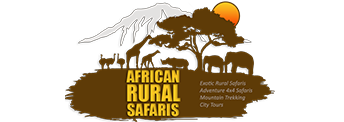
Our Culture
The Maasai
The Maasai (/ˈmɑːsaɪ, mɑːˈsaɪ/) are a Nilotic ethnic group inhabiting northern, central and southern Kenya and northern Tanzania. They are among the best known local populations internationally due to their residence near the many game parks of the African Great Lakes, and their distinctive customs and dress.
Maasai (not Masai) is the correct spelling of this noble tribe: it means people speaking maa. Masai was the incorrect spelling of the British settlers and has remained in current use. The Maasai have always been special. Their bright red robes set them apart visually. Spear in hand, they are calm and courageous regardless of the danger.
Fearless Warriors
One of the famous tribes of Africa, the nomadic and pastoralist Maasai people are a Nilotic ethnic group inhabiting selected but large parts of northern, central and southern Kenya and across the border in northern Tanzania as well. The Maasai are in part the better known ethnic people in East Africa due to their traditional origins from areas surrounding Masai Mara Game Reserve and Amboseli near the Tanzania border. The Maasai speak a language known as Maa and their shared Nilotic origins link them in various ways to the Kalenjin tribe of Kenya which is famous for producing some of the best long distance runners in the world. The Maasai have plenty of unique characteristics about their culture and some of these have been listed below, including their dress, diet and way of life.
Maasai culture is centred around the belief that God (called Engai, or Enkai, in the tribe’s Maa language) created cattle especially for them, and they are the custodians of all the world’s cattle. For Maasai, life revolves around amassing and grazing large herds of cows (and to a lesser extent, goats). As well as being the tribe’s primary income source (livestock are traded for other products or cash), cows also play an important role in Maasai communal life. Families and clans establish alliances through the exchange of cattle; and consuming the meat and milk of cows is considered a sacred act, one that binds them to their creator. The Maasai tribe stood firm against slavery and lived alongside most of the land's wild animals with an aversion to eating birds and game. Maasai land now boasts East Africa's finest nature and wildlife areas.
According to the tribe's own oral history, the Maasai tribe originated north of Lake Turkana (north-west Kenya) in the lower Nile Valley. They began migrating south in the 15th century and arrived in the long trunk of land stretching across central Tanzania and Northern Kenya during the 17th and 18 century. The Maasai territory reached its most dominant size in the 19 century when they covered most of the Great Rift Valley and adjacent lands from Dodoma and Mount Marsabit. At this time the Maasai raided cattle far across the east at Tanga Coast in Tanzania. They used shields and spears, but were most feared for throwing orinka (clubs) which could be expertly thrown from up to 70 paces (approximately 100 meters).
The Maasai 'Emutai' of 1883-1902 came after the time of expanding. This period was scarred by epidemics of smallpox, contagious bovine pleuropneumonia and rinderpest. The estimated 90 per cent of cattle and half of wild species perished from rinderpest. This drastic period coincided with drought. The rains neglected the lands completely in 1897 and 1898. Commencing with a 1904 treaty and followed by another treaty in 1911, Maasai lands in Kenya were cut down by 60 percent when the British evicted them to allow space for settler ranches thus confining the Maasai people to present-day Narok and Kajiado districts.
Maasai in Tanzania were forced out from their fertile lands between Mount Kilimanjaro and Mount Meru and most of their fertile mountainous regions near the Ngorongoro in the 1940s. More land was claimed to create national parks and wildlife reserves. Masai Mara, Samburu, Ngorongoro, Amboseli, Nairobi National Park, the Serengeti, Lake Nakuru, Manyara and Tarangire. Maasai society is firmly patriarchal in nature, with elder Maasai men sometimes joined by retired elders, determining most major matters for the Maasai tribes. The Maasai people are monotheistic, and their God is named Engai or Enkai.
For Maasai people living a traditional way of life, the end of life is virtually without a formal funeral ceremony, and the dead are left out in the fields for scavengers. Burial has in the past been reserved for great chiefs only, since it is believed by the Maasai that burial is harmful to the soil.
Traditional Maasai people's lifestyle concentrates on their cattle which make up the primary source of food. Amongst the Maasai and several other African ethnic groups, the measure of a man's wealth is in terms of children and cattle. So the more the better.
A man who has plenty cattle but not many children is considered to be poor and vice versa. A Maasai myth says that God afforded them all the cattle on earth, resulting in the belief that rustling from other tribes is a matter of claiming what is rightfully theirs, a practice that has now become much less common.
During recent years, projects have been implemented to help Maasai tribal leaders find a way to preserve their traditions and way of life while also trying to balance the education needs of the Maasai children for the modern world.
